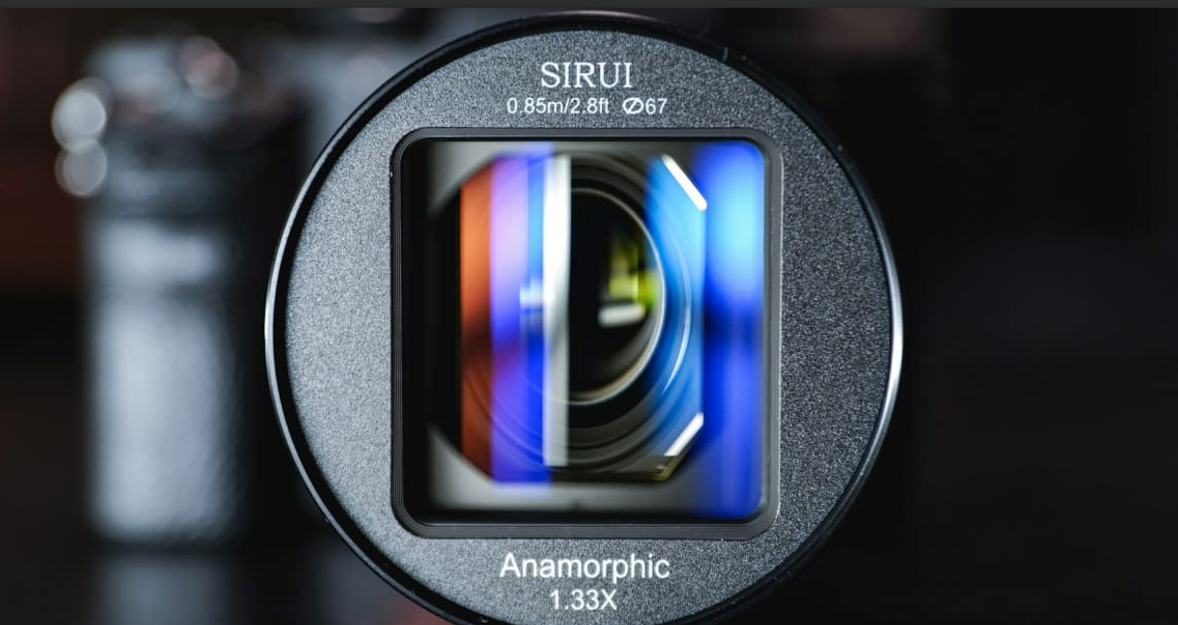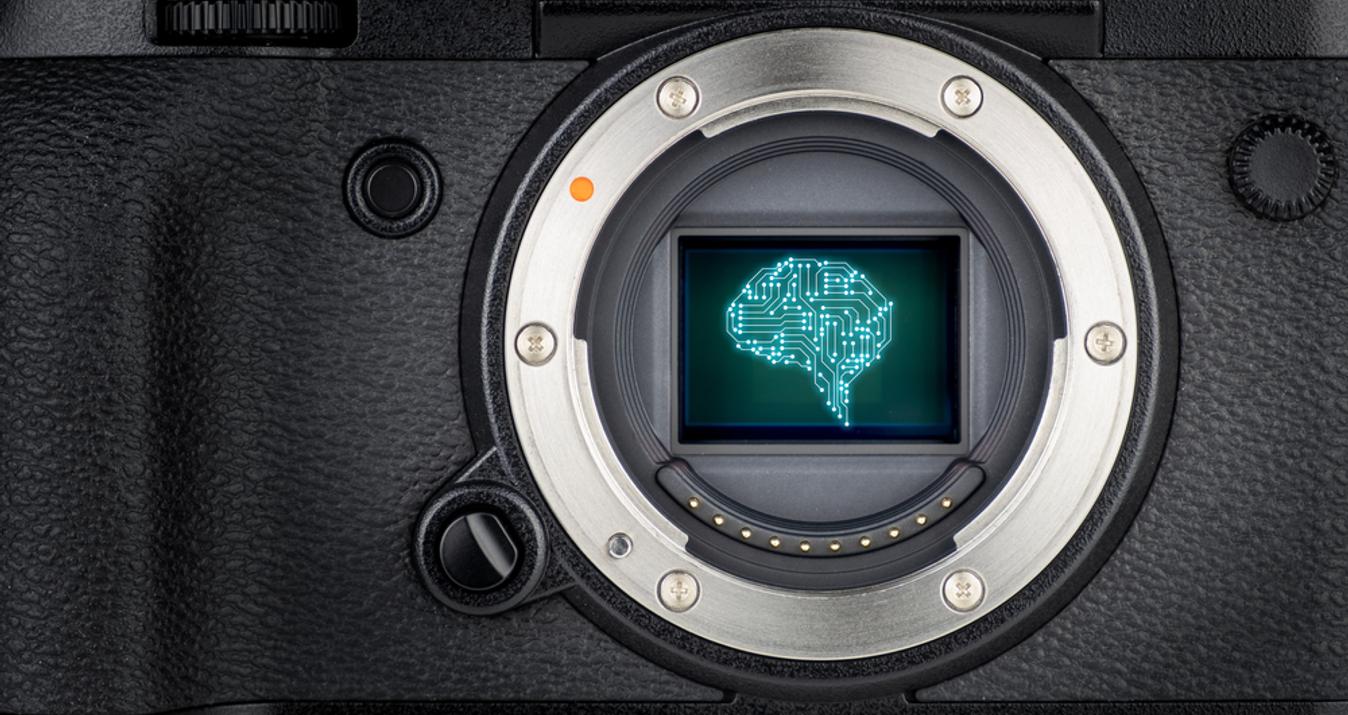What Is an Anamorphic Lens?
January 28, 2025

Curious about anamorphic lenses? This guide explains their unique design, how they work, and why they’re a favorite among filmmakers and photographers for creating cinematic visuals.
You’ll be surprised to know that the first anamorphic lenses were developed for civil services in the 1920s. Now, they are widely popular in Hollywood. A single one of these lenses can cost as much as $50,000. Why make them so unique and irreplaceable?
Cinematographers know that every scene is its own story. An anamorphic lens — the secret filmmaking tool that helped define some of cinema’s most iconic widescreen shots. "Blade Runner" (1982), "Star Wars" (1977), "Indiana Jones" (1984), "E.T. the Extra-Terrestrial" (1982), and "La La Land" (2016) — all these films used anamorphic lenses that provoke epic feelings we all look forward to.
Do you want to know the anamorphic lens meaning and the differences between them and regular lenses? The answers are all in this guide.
Anamorphic Lens Definition
 A camera lens that projects a wider-than-normal aspect ratio image onto a sensor or film in compressed format to fit into standard frames. Anamorphic lenses have become prized for their unusual visual characteristics, including oval bokeh and horizontal lens flares.
A camera lens that projects a wider-than-normal aspect ratio image onto a sensor or film in compressed format to fit into standard frames. Anamorphic lenses have become prized for their unusual visual characteristics, including oval bokeh and horizontal lens flares.
Feature | Description |
Horizontal Compression | With values 1,33x, 1,5x, or 2x, you capture a broader view without needing a bigger camera sensor. |
Unique Bokeh | Creates oval light flares and artistic background blur. |
Distortion | Adds natural curvature or “squeeze.” |
How do anamorphic lenses work? Such types of optics shoot the scene from left to right. That’s why they’re given that “letterbox look” in many Hollywood movies (the wide black bars at the top and bottom of the screen). These lenses allow us to squeeze or stretch an image, adding a particular effect when putting together footage.
Anamorphic Lenses vs Spherical (Normal)
 Why do cinematographers use conventional simple optics for some scenes and anamorphic lenses for others? Spherical lenses provide technical clarity, and anamorphic lenses add magic to the frame: characteristic optical “flares” and bokeh (the combination of out-of-focus areas and lens). How do these lenses influence the way we see the image?
Why do cinematographers use conventional simple optics for some scenes and anamorphic lenses for others? Spherical lenses provide technical clarity, and anamorphic lenses add magic to the frame: characteristic optical “flares” and bokeh (the combination of out-of-focus areas and lens). How do these lenses influence the way we see the image?
Why Use an Anamorphic Lens?
 Anamorphic lenses compress the image, transmit it to the film, and then “stretch” it back on the screen. The main question here is, “Why use anamorphic lens?”. The answer is simple—this leads you to get footage with such a wide field of view that it is hard to recreate in any other way.
Anamorphic lenses compress the image, transmit it to the film, and then “stretch” it back on the screen. The main question here is, “Why use anamorphic lens?”. The answer is simple—this leads you to get footage with such a wide field of view that it is hard to recreate in any other way.
Cinematic lenses also affect lighting and depth of field. They are a part of the language of cinema, and they give the atmosphere cold or warm. Anamorphic lenses produce bokeh that doesn't appear as cute circular spots but elongated ellipses, which you can find in any big-budget movie.
Seeing the difference between anamorphic vs non-anamorphic helps in comparing them for creating distinct visual styles and cinematic effects:
Feature | Anamorphic Lenses | Spherical (Normal) Lenses |
Image compression | Squeezes the width dimension of the image horizontally (1.33x or 2x). | The original size of the image. |
Frame dimensions | Creates widescreen, cinematic aspect ratios (e.g., 2.39:1). | Standard aspect ratios (e.g., 16:9 or 4:3). |
Field of view | Wider field of view without using a wider lens. | The typical field of view is based on focal length. |
Bokeh characteristics | Produces oval-shaped bokeh and horizontal light flares. | Circular bokeh with no unique flares. |
Image distortion | Includes slight curvature or “squeezing” of the image. | Minimal distortion; straight lines remain straight. |
Pros and Cons of Each Type
There are two main options when choosing lenses: anamorphic lens vs regular. There are advantages and disadvantages to both. But why do experienced cinematographers often pick anamorphic lenses, which are expensive and complex to use?
Anamorphic Lenses
Creators utilize letterbox lenses to achieve a cinematic, widescreen aesthetic with unique visual effects. However, they have advantages and challenges.
Pros | Cons |
+ cinematic widescreen look; + unique anamorphic lens effect; + native aspect ratio; + high aesthetic appeal. | - expensive and bulky; - requires post-production work; |
Spherical Lenses
Affordable, versatile, and easy to use, regular lenses are a great first step into visual storytelling for anyone. They are well-known for their simplicity, compatibility with lenses from all kinds of cameras, and capacity to provide sharp, distortion-free images in almost any condition.
Pros | Cons |
+ affordable and versatile; | - limited cinematic aesthetic; |
There’s no right or wrong; just look at an anamorphic lens comparison and pick a lens based on your budget and needs.
How to Use the Anamorphic Lens: Tips and Considerations
 Many beginner filmmakers wonder, "Why shoot anamorphic?" Mastering the use of this type of lens takes practice, but these tips can help you get started to produce the video like a professional:
Many beginner filmmakers wonder, "Why shoot anamorphic?" Mastering the use of this type of lens takes practice, but these tips can help you get started to produce the video like a professional:
1. Choose the Right Compression Ratio
Your compression ratio (1.33x, 1.5x, or 2x) will be derived from your desired look and your project's technical requirements. A compression ratio less extreme than 1.33x can achieve a more subtle wide-screen effect, which gives a more natural cinematic look. A higher compression ratio (like 2x) promises a more striking widescreen look, which is common in films.
Pick a ratio that fits your post idea or vibe and the details of the footage you are shooting, such as the type of scene or the level of visual intensity you wish to transmit.
2. Follow Frame Guidelines
This type of lens has a wide field of view and a wide aspect ratio anamorphic. They require a lot of caretakers when framing. That's why filmmakers often employ on-screen, or overlay, guides in the camera viewfinder. The guidelines give you good guidelines for framing your shots for the cinematic look without cutting too much.
3. Mind the Focus
Anamorphic optics typically have a shallower depth of field than spherical lenses, so focusing on the object sometimes becomes tricky. Precision focus is necessary to avoid unwanted softness, especially in wide shots. If you're using manual or autofocus here, pay close attention to keep focus throughout your shot sharp and free of distracting blurriness.
4. Embrace Flares and Distortion
Anamorphic lenses produce horizontal lens flares, which we call optical distortion. Instead of trying to fix these things, use them as part of your creative arsenal. It can bring in the anamorphic bokeh and how light responds with the lens, which gives a more versatile cinematic feel.
Working with characteristics, like taming light sources or learning how to frame your shots, can be helpful for your project.
5. Use Proper Desqueezing Tools
Anamorphic lenses shoot a wide image with a squished version, which you then have to desquish in the post to get the correct aspect ratio. Using dedicated desqueezing tools or presets created explicitly for anamorphic video content will. The footage has to be adjusted carefully, as bad desqueezing can mess up the image and remove the characteristic aesthetic of anamorphic lenses.
6. Pair with a Compatible Camera
Not all cameras are appropriate for anamorphic lenses. It may require additional adapters or modifications, so check your camera brand specifications before investing. It will prevent you from having compatibility problems and getting the best of your lens.
Camera Model | Sensor Type | Good/Bad | Why |
ARRI Alexa LF | Large Format (Full Frame) | + | It is ideal for anamorphic lenses with large sensors and de-squeeze features. |
RED Komodo 6K | Super 35mm | + | Compact supports anamorphic lenses and has built-in de-squeeze options. |
Panasonic Lumix GH5 | Micro Four Thirds | + | It is affordable, supports anamorphic shooting modes, and works with lenses like SLR Magic. |
Blackmagic Pocket Cinema Camera 6K | Super 35mm | + | Supports anamorphic lenses, high resolution, and flexible post-production options. |
Canon EOS Rebel T7i | APS-C | - | It has a smaller sensor crop factor and lacks de-squeeze or anamorphic lens support. |
Nikon D3500 | APS-C | - | Small sensor and no specific anamorphic support, which is not ideal for cinematic widescreen. |
Sony Alpha a6000 | APS-C | - | APS-C sensor lacks a de-squeeze feature, which is not optimal for anamorphic lenses. |
7. Learn Your Lens's Personality
Many new filmmakers ask, “What is anamorphic widescreen?” when exploring cinematic techniques for the first time. Older lenses are softer and wide open, giving gorgeous, character-filled flares. Modern ones are more pointed and have more subtle optical effects. Test your lens to see how it performs in various conditions and learn where its sweet spots are.
8. Recreate the Anamorphic Lens Effect with Luminar Neo
If you don’t want to invest in an anamorphic lens, you can achieve something similar using software like Luminar Neo. Its tools can replicate the following:
horizontal flares;
oval bokeh;
cropped widescreen ratios.
You can upload footage, apply anamorphic style presets, and adjust settings to achieve your desired cinematic look.
Final
 Anamorphic lenses add a cinematic feel to your visual story. They have a learning curve and need a higher price tag, but the results are worth it. The anamorphic look can take your work to the next level. Either having a physical lens or software like Luminar Neo does the work for you. Now that you’ve had the tips and insights, you can capture beautiful pictures that reflect you in spectacular widescreen.
Anamorphic lenses add a cinematic feel to your visual story. They have a learning curve and need a higher price tag, but the results are worth it. The anamorphic look can take your work to the next level. Either having a physical lens or software like Luminar Neo does the work for you. Now that you’ve had the tips and insights, you can capture beautiful pictures that reflect you in spectacular widescreen.





